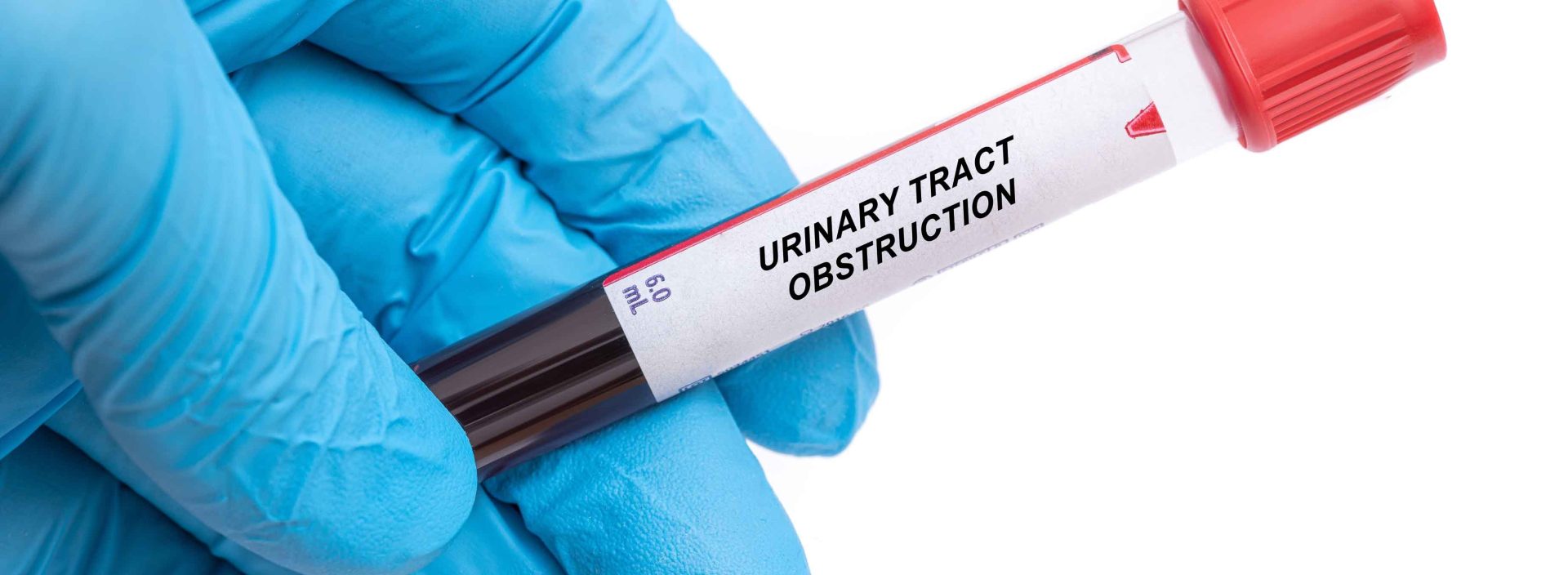Urinary tract obstructions represent a serious medical condition that can rapidly progress from uncomfortable symptoms to permanent kidney damage if left untreated. When the normal flow of urine faces blockage anywhere from the kidneys to the urethra, pressure builds within the delicate structures designed to filter blood and produce urine. This pressure causes immediate functional changes that can become structural damage over time, potentially leading to irreversible kidney failure. Understanding this condition—its causes, symptoms, diagnostic approaches, and treatment options—provides crucial knowledge for anyone experiencing urinary changes or pain, as early intervention often means the difference between complete recovery and chronic kidney disease.
The urinary system: Structure and function
Understanding the urinary system’s normal operation helps clarify how obstructions impact kidney function and overall health. This system’s remarkable design typically operates efficiently, but any disruption to urine flow can quickly create serious problems.
The kidneys serve as the system’s primary filtration units, performing the crucial function of removing waste products and excess fluids from the bloodstream. These bean-shaped organs contain approximately one million tiny filtering units called nephrons, each consisting of a glomerulus (the filter) and a tubule (the processing unit). Every day, the kidneys filter approximately 150 quarts of blood to produce about 1-2 quarts of urine. This filtering process maintains proper electrolyte balance, regulates blood pressure, activates vitamin D, and produces hormones that stimulate red blood cell production.
The renal pelvis collects filtered urine from the kidney’s collecting ducts before channeling it into the ureters. This funnel-shaped structure serves as a transition point between the kidney’s complex internal structures and the ureter’s tube-like pathway. Obstructions that affect the renal pelvis can cause particularly rapid kidney damage, as pressure builds directly against the kidney’s filtration system.
The ureters transport urine from the kidneys to the bladder through peristaltic contractions, similar to those moving food through the digestive tract. These narrow tubes, approximately 8-10 inches long and 1/10 inch in diameter, feature one-way valves that prevent urine backflow. Their narrow diameter makes them particularly susceptible to blockage from kidney stones, scarring, or external compression.
The bladder serves as a temporary storage reservoir for urine before elimination. This muscular organ can typically hold 400-600 milliliters of urine comfortably before signaling fullness through nerve receptors in its walls. The bladder’s ability to expand and contract allows it to accommodate varying urine volumes while maintaining low pressure within the system—a crucial factor for kidney protection.
The urethra provides the final pathway for urine elimination from the body. This tube extends from the bladder to the external urethral opening, with significant anatomical differences between males and females. The male urethra averages 8 inches in length and passes through the prostate gland and penis, while the female urethra measures approximately 1.5 inches and opens just above the vaginal opening. These anatomical differences explain why certain obstruction causes affect the sexes differently.
This system’s proper function depends on unobstructed urine flow throughout the entire pathway. Any blockage creates pressure that transmits backward through the system, eventually reaching the kidneys’ delicate filtering structures. Understanding this interconnected nature helps explain why obstructions at any point can damage kidney function and why prompt treatment remains essential regardless of the obstruction’s location.
How obstructions damage kidney function
Urinary tract obstructions initiate a cascade of physiological changes that rapidly affect kidney function and can progress to permanent damage without intervention. This progression follows a relatively predictable timeline that explains why prompt treatment proves crucial for preserving kidney health.
The initial pressure response occurs within hours of obstruction development as urine continues to produce without adequate drainage. This building pressure transmits backward through the urinary system, eventually reaching the kidney’s filtering units. In the early phase, increased pressure in the renal pelvis triggers protective mechanisms, including reduced filtration rates and increased pressure in the Bowman’s capsule (the beginning of each nephron). While initially protective by limiting urine production, these adaptations rapidly become harmful if obstruction persists.
Blood flow alterations represent the next phase of damage. During the first 12-24 hours of obstruction, renal blood flow actually increases as the body attempts to maintain filtration despite rising pressure. However, after this initial phase, significant vasoconstriction occurs, reducing blood flow to the affected kidney by up to 50% within 72 hours. This reduction provides temporary protection but leads to ischemic damage (tissue damage from reduced oxygen) if obstruction continues.
Inflammatory responses begin within days of persistent obstruction as the body reacts to tissue stress and reduced blood flow. Inflammatory cells infiltrate kidney tissue, releasing cytokines and other chemical mediators that further damage nephrons. This inflammatory cascade accelerates functional decline and sets the stage for permanent structural changes if the obstruction remains unresolved.
Cellular changes progress from functional adaptations to structural damage as obstruction continues. Renal tubular cells undergo apoptosis (programmed cell death) and are replaced by fibrous tissue that cannot perform filtering functions. These changes begin appearing after approximately one week of complete obstruction and accelerate over time, with significant tubular atrophy evident by 2-4 weeks in experimental models.
Fibrosis represents the final and most damaging phase of obstruction effects. As functional kidney cells die, they’re replaced by collagen-producing cells that create scar tissue within the kidney. This fibrosis becomes increasingly evident after 1-2 weeks of obstruction and progressively replaces normal kidney architecture. Unlike other kidney tissues, fibrotic changes resist reversal even after obstruction relief, making this phase particularly concerning for long-term function.
Compensatory responses from the unaffected kidney can mask damage progression in cases of unilateral obstruction (affecting only one kidney). The healthy kidney increases filtration rates by up to 70-80% to maintain overall kidney function, often keeping blood tests within normal ranges despite significant damage to the obstructed kidney. This compensation explains why some individuals with unilateral obstruction show minimal symptoms or laboratory abnormalities despite progressive damage.
The timeline from obstruction to permanent damage varies based on obstruction completeness, the patient’s age, and underlying kidney health. Generally, complete obstructions cause more rapid damage than partial ones, with permanent changes beginning within days and becoming increasingly irreversible after 2-3 weeks. However, even partial obstructions eventually lead to permanent damage through chronic pressure effects and reduced blood flow if left untreated.
This progressive damage pattern underscores why prompt diagnosis and treatment of urinary tract obstructions remain essential for preserving kidney function. With appropriate intervention, most of the early phases prove reversible, but once fibrotic changes establish, some degree of permanent function loss becomes inevitable regardless of treatment.
Common causes across the lifespan
Urinary tract obstructions arise from various causes, with certain conditions more prevalent at different life stages. Understanding these common causes helps healthcare providers determine appropriate diagnostic approaches and treatment plans based on a patient’s age, sex, and medical history.
In newborns and infants, congenital abnormalities represent the most frequent obstruction causes. Ureteropelvic junction obstruction occurs when the connection between the renal pelvis and ureter develops abnormally, creating a functional blockage that impedes urine flow from the kidney. Posterior urethral valves, found exclusively in male infants, involve excess tissue flaps in the posterior urethra that create a partial or complete blockage. Ureterocele, an abnormal bulging of the ureter as it enters the bladder, can also obstruct urine flow. These congenital conditions often receive diagnosis during prenatal ultrasounds but sometimes remain undetected until symptoms develop after birth.
Children and adolescents most commonly experience obstructions from kidney stones, urinary tract infections with severe inflammation, or external compression from abdominal masses. Additionally, some congenital conditions not detected in infancy manifest during childhood as the urinary system faces increased demands. Vesicoureteral reflux, the abnormal backflow of urine from the bladder to ureters, can cause functional obstruction through increased pressure, though it technically represents a different mechanism than true obstruction.
Young and middle-aged adults face different obstruction patterns based on sex. In women of reproductive age, pregnancy creates the most common cause of temporary urinary obstruction as the enlarging uterus compresses the ureters, particularly on the right side. Gynecological conditions including endometriosis, fibroids, and ovarian cysts can also compress urinary structures externally. In men, benign prostatic hyperplasia (BPH) begins affecting some individuals as early as their 40s, progressively narrowing the urethra as the prostate enlarges. Both sexes commonly develop kidney stones during these years, with peak incidence between ages 30-50.
Older adults experience age-specific causes alongside increased incidence of conditions affecting younger populations. Prostate issues become nearly universal in aging men, with BPH affecting approximately 50% of men by age 60 and 90% by age 85. Prostate cancer represents another significant cause of urinary obstruction in men over 65. In both sexes, neurogenic bladder (bladder dysfunction due to nerve damage) becomes more prevalent with age, often secondary to diabetes, Parkinson’s disease, or prior strokes. Additionally, pelvic organ prolapse in women who have had multiple pregnancies can create functional obstruction of the urethra.
Across all age groups, kidney stones represent the most common cause of sudden, painful obstruction. These crystalline formations develop when urine contains excessive levels of stone-forming substances like calcium, oxalate, or uric acid. Stones measuring 5mm or larger frequently become lodged in the narrow portions of the ureter, creating acute obstructions that trigger severe pain. Approximately 12% of men and 6% of women experience kidney stones during their lifetime, with recurrence rates approaching 50% without preventive measures.
Malignancies affecting urinary structures or adjacent organs cause obstructions with particularly serious implications. Urological cancers (bladder, prostate, kidney) can create internal blockages through tumor growth within passages or external compression of urinary structures. Non-urological pelvic cancers (colorectal, cervical, ovarian) frequently involve the ureters or urethra as they advance, creating obstructions that may provide the first indication of malignancy. These cancer-related obstructions often develop gradually and may present with fewer acute symptoms than other causes.
Iatrogenic (treatment-related) causes include complications from surgical procedures, radiation therapy, or certain medications. Surgical scarring following pelvic operations can constrict or kink urinary passages. Radiation therapy for pelvic malignancies causes tissue inflammation followed by fibrosis that may narrow urinary structures. Certain medications, particularly those forming crystals in urine like some HIV treatments, antibiotics, and chemotherapy agents, can precipitate within kidney tubules and create obstructions.
Understanding these common causes based on demographic factors helps clinicians prioritize the most likely explanations for observed symptoms, guiding initial testing and treatment approaches. This life-stage perspective also supports preventive strategies targeting age-specific risk factors before obstructive damage occurs.
Recognizing the warning signs
Urinary tract obstructions produce various symptoms ranging from subtle changes to obvious emergencies. Recognizing these warning signs allows for earlier intervention, potentially preventing permanent kidney damage. The specific symptom pattern often provides clues about the obstruction’s location and severity.
Pain represents the most common symptom, though its characteristics vary based on obstruction location and development speed. Kidney obstructions typically cause flank pain (between the ribs and hip) that may radiate to the lower abdomen. This pain has a characteristic severity and pattern with sudden-onset obstructions like kidney stones, often described as waves of excruciating pain (renal colic) that peak every 20-60 minutes. Gradually developing obstructions usually produce duller, constant discomfort that intensifies over days or weeks. Obstructions near the bladder or urethra more commonly cause suprapubic pain (lower central abdomen) or perineal discomfort (between the genitals and rectum).
Urinary changes frequently accompany obstructions regardless of their location. Decreased urine output (oliguria) may occur with complete obstructions, while partial blockages sometimes cause increased frequency with smaller volumes. Difficulty initiating urination, weak urine stream, or feelings of incomplete bladder emptying particularly suggest lower tract obstructions. Complete inability to urinate despite bladder fullness (acute urinary retention) represents an emergency requiring immediate medical attention. Some patients also notice changes in urine appearance, including increased cloudiness, darker color, or visible blood.
Nausea and vomiting frequently accompany severe obstruction pain, particularly with kidney stones. These symptoms result from shared nerve pathways between the urinary and digestive systems, creating visceral responses to severe urinary pain. The combination of flank pain with nausea and vomiting strongly suggests urinary obstruction rather than gastrointestinal issues, though the distinction sometimes challenges even experienced clinicians.
Fever and chills indicate potential infection above an obstruction—a dangerous combination requiring emergency treatment. When bacteria multiply in trapped urine, they can enter the bloodstream (urosepsis), creating a life-threatening situation. The classic symptom triad of flank pain, fever, and vomiting strongly suggests an infected obstruction that needs immediate medical attention to prevent septic shock and permanent kidney damage.
Abdominal or flank swelling occasionally occurs with severe, prolonged obstructions as urine accumulates in the kidney (hydronephrosis) or forms urine-filled blisters on the kidney’s surface (forniceal rupture). This swelling may be visible externally in thin individuals or detectable only through imaging in others. Some patients report feeling a palpable mass or unusual fullness on the affected side.
Hypertension (high blood pressure) commonly develops with obstructions affecting kidney function. As filtered waste products accumulate and fluid balance mechanisms deteriorate, the kidneys release hormones that increase blood pressure. This hypertension may be the first indication of obstruction in some patients, particularly when the blockage develops gradually without causing significant pain.
Systemic symptoms develop as obstruction affects kidney function and waste products accumulate in the bloodstream. These may include fatigue, decreased appetite, unintentional weight loss, mental status changes, and generalized weakness. Such symptoms typically indicate advanced kidney impairment and warrant urgent evaluation, as they suggest the obstruction has already caused significant functional damage.
Symptom variability between individuals creates diagnostic challenges. Some patients, particularly elderly individuals or those with diabetes or neurological conditions affecting sensation, experience minimal symptoms despite significant obstructions. This muted presentation often delays diagnosis until routine testing reveals kidney function abnormalities or imaging studies ordered for other reasons incidentally discover the obstruction.
Recognizing these warning signs, particularly when multiple symptoms occur together, allows for earlier medical evaluation and intervention. Given the progressive nature of obstruction-related kidney damage, any suspicious symptoms warrant prompt medical attention rather than watchful waiting.
Diagnostic approaches
Properly diagnosing urinary tract obstructions requires a systematic approach combining clinical assessment with appropriate laboratory and imaging studies. This diagnostic process not only confirms the obstruction’s presence but also identifies its location, cause, and impact on kidney function—all essential information for treatment planning.
The clinical evaluation begins with a thorough history focusing on symptom characteristics, timing, and progression. Clinicians gather information about previous urological conditions, relevant medical history, and medication use that might predispose to obstructions. Physical examination includes vital signs assessment (particularly for fever or hypertension), abdominal and flank examination for tenderness or masses, and evaluation of the prostate in men. This initial assessment helps determine the urgency of the situation and guides subsequent testing.
Urinalysis provides crucial information about potential infection, inflammation, or bleeding within the urinary tract. Typical findings in obstruction include blood in the urine (hematuria), increased white blood cells suggesting inflammation, and occasionally crystals that might indicate stone formation. In cases with infection above the obstruction, bacteria will appear in the urine, though their absence doesn’t rule out obstruction without infection. The urine concentration (specific gravity) also provides clues about kidney function, with dilute urine sometimes indicating impaired concentration ability.
Blood tests assess kidney function and detect complications. Blood urea nitrogen (BUN) and creatinine measurements evaluate how effectively the kidneys filter waste products, with elevations indicating reduced kidney function. Complete blood count can reveal infection (elevated white blood cells) or anemia that might result from chronic kidney disease. Electrolyte levels help identify imbalances that commonly accompany kidney dysfunction, particularly abnormal potassium, sodium, or bicarbonate concentrations that might require urgent correction.
Imaging studies provide the most definitive information about obstruction location, severity, and cause. Ultrasound typically serves as the initial imaging study due to its safety, availability, and ability to detect hydronephrosis (kidney swelling from trapped urine) without radiation exposure. This non-invasive approach provides real-time images of the kidneys, ureters, and bladder, though it sometimes struggles to visualize the exact obstruction location or small stones.
Computed tomography (CT) offers more detailed visualization when ultrasound findings are inconclusive or treatment planning requires additional information. Non-contrast CT scans provide excellent visualization of most kidney stones and can identify their exact size and location. CT studies with intravenous contrast (CT urogram) allow visualization of the entire urinary tract and can identify more subtle obstructions, tumors, or structural abnormalities that ultrasound might miss. However, the contrast agents used require careful consideration in patients with already compromised kidney function.
Magnetic resonance imaging (MRI) provides an alternative when radiation exposure concerns exist or contrast CT cannot be performed due to allergy or kidney function. MRI urography offers excellent soft tissue detail that helps distinguish tumors from other causes of obstruction. Though less widely available and more time-consuming than CT, MRI provides valuable information in complex cases, particularly when distinguishing between benign and malignant causes of obstruction.
Nuclear medicine studies assess functional impacts of obstruction rather than just anatomical changes. A renal scan using radioactive tracers measures how effectively each kidney filters and excretes the tracer, providing split function assessment (the relative contribution of each kidney to overall function). This information helps treatment planning by identifying whether an obstructed kidney retains enough function to justify aggressive intervention versus observation or removal if function is minimal.
Urodynamic testing evaluates bladder and urethral function in cases where lower urinary tract obstruction is suspected. This specialized testing measures pressures within the bladder during filling and emptying, quantifies urine flow rates, and assesses coordination between bladder contraction and urethral relaxation. These studies prove particularly valuable for diagnosing functional obstructions where the anatomy appears normal but physiological coordination problems create functional blockage.
Cystoscopy allows direct visualization of the bladder and urethra through a thin telescopic instrument. This procedure can identify obstructions in the lower urinary tract, including prostate enlargement, urethral strictures, bladder tumors, or anatomical abnormalities. Cystoscopy also enables certain therapeutic interventions during the same procedure, including stone fragment removal, tumor biopsy, or stent placement to relieve obstruction.
The diagnostic approach typically follows a stepwise progression from less to more invasive testing based on initial findings, though acute presentations sometimes require expedited comprehensive evaluation. This systematic approach ensures accurate diagnosis while minimizing unnecessary testing or treatment delays.
Treatment strategies and timelines
Treating urinary tract obstructions requires balancing the urgency of relieving the blockage with addressing its underlying cause. Treatment approaches vary based on obstruction location, severity, and etiology, but all share the fundamental goal of restoring normal urine flow before permanent kidney damage occurs.
Emergency drainage procedures provide immediate relief for obstructions causing severe symptoms, infection, or significant kidney function impairment. These interventions focus on establishing urine drainage rather than definitively treating the underlying cause. Ureteral stent placement involves inserting a thin tube through the bladder and ureter that bypasses the obstruction, allowing urine to flow around the blockage. Percutaneous nephrostomy creates an alternative drainage path by placing a tube directly into the kidney through the back, diverting urine externally into a collection bag. Both procedures typically occur under local anesthesia with sedation and provide immediate pressure relief while allowing time for complete evaluation and definitive treatment planning.
Kidney stone management depends on stone size, location, and composition. Stones smaller than 5mm often pass spontaneously with medical expulsive therapy using alpha-blockers that relax ureter muscles and pain management. Extracorporeal shock wave lithotripsy (ESWL) uses focused shock waves to fragment larger stones into smaller pieces that can pass naturally. Ureteroscopy involves inserting a thin scope through the urethra and bladder into the ureter, where stones are either removed intact or fragmented using laser energy. Percutaneous nephrolithotomy removes very large or complex stones through a small incision in the back directly into the kidney. The appropriate approach depends on individual factors, but all share the goal of restoring urine flow while minimizing kidney damage.
Treating benign prostatic hyperplasia (BPH) in men involves medications or surgical approaches depending on symptom severity and obstruction degree. Alpha-blockers relax prostate and bladder neck muscles, improving urine flow without reducing prostate size. 5-alpha-reductase inhibitors gradually shrink the prostate over months by altering hormone effects. Minimally invasive surgical options include transurethral resection of the prostate (TURP), which removes obstructing prostate tissue through the urethra; laser procedures that vaporize or enucleate prostate tissue; or newer techniques using steam, water jets, or implanted devices to create channels through the obstructing tissue. These interventions improve urinary flow while preserving sexual function whenever possible.
Stricture management addresses narrowing within the urinary tract through dilation or surgical correction. Urethral strictures may initially respond to dilation using progressively larger instruments to stretch the narrowed area. More definitive approaches include direct vision internal urethrotomy (cutting the strictured area) or urethroplasty (reconstructing the urethra using tissue grafts). Ureteral strictures similarly respond to dilation, but often require more definitive surgical revision or reconstruction for long-term resolution, especially when caused by underlying inflammatory conditions or prior surgical complications.
Cancer-related obstructions require addressing both the immediate blockage and the underlying malignancy. Temporary drainage through stents or nephrostomy tubes relieves pressure while staging and treatment planning occur. Definitive management typically involves multidisciplinary approaches including surgical resection when possible, chemotherapy, radiation therapy, or combinations thereof. For advanced malignancies where cure is not possible, maintaining urinary drainage through long-term stents or nephrostomy tubes preserves kidney function and quality of life while other palliative treatments address the underlying cancer.
Congenital obstruction correction typically involves surgical reconstruction appropriate to the specific anatomical abnormality. Pyeloplasty reconstructs the ureteropelvic junction to create wider, more functional drainage from the kidney to ureter. Correction of posterior urethral valves involves endoscopic valve ablation to remove the obstructing tissue flaps. These reconstructive approaches require pediatric urological expertise and careful timing to relieve obstruction while minimizing surgical risks.
Post-obstruction care includes close monitoring of kidney function recovery and addressing any factors that might predispose to recurrence. Serial laboratory testing tracks how kidney function improves after obstruction relief, with most recovery occurring within 1-3 months. Imaging studies confirm appropriate anatomical healing and drainage restoration. Metabolic evaluations for patients with kidney stones identify underlying risk factors that can be modified to prevent recurrence. Long-term follow-up ensures stability of the resolution and monitors for delayed complications like scarring or stricture development at the obstruction site.
The timeline for intervention critically influences outcomes. Complete obstructions generally require treatment within days to prevent irreversible damage, while partial obstructions sometimes allow more time for evaluation and planning. However, even partial obstructions eventually cause permanent kidney damage if left untreated. The general principle remains consistent across obstruction types: restoring normal urinary drainage as promptly as possible while minimizing intervention risks provides the best chance for complete kidney function recovery.
Preventing recurrence and complications
After successful obstruction treatment, preventing recurrence and monitoring for potential complications becomes the focus of ongoing care. These preventive strategies vary based on the original obstruction cause but share common elements of risk factor modification, appropriate follow-up, and patient education.
Kidney stone prevention requires addressing underlying metabolic abnormalities identified through 24-hour urine collections. These tests measure various stone-forming substances and inhibitors, allowing targeted interventions. Increased fluid intake represents the universal recommendation for all stone formers, aiming for urine output exceeding 2 liters daily to reduce crystal concentration. Dietary modifications vary by stone type: calcium stone formers often benefit from moderate calcium intake, reduced sodium, and limited animal protein, while uric acid stone formers need increased urine alkalinization and purine restriction. Medications including thiazide diuretics, citrate supplements, or allopurinol target specific metabolic abnormalities when dietary changes prove insufficient. With comprehensive prevention programs, recurrence rates decrease from approximately 50% to 10% over five years.
Prostate health maintenance helps prevent BPH-related obstructions through several approaches. Regular physical activity appears to reduce BPH progression risk, with studies showing that sedentary men develop more significant prostate enlargement. Maintaining healthy weight similarly correlates with lower BPH risk and symptom severity. Some evidence suggests that reducing inflammation through dietary choices (increasing vegetables, fruits, and healthy fats while limiting processed foods) may slow BPH progression. Once BPH develops, consistent medication use as prescribed helps prevent symptom recurrence and acute urinary retention episodes that might otherwise require emergency intervention.
Stricture prevention focuses on identifying and addressing underlying causes while minimizing additional trauma. For infectious strictures, prompt and complete treatment of urinary tract infections reduces inflammation that might otherwise lead to scarring. After endoscopic procedures, gentle technique and appropriate instrument sizing minimize urethral trauma that could cause stricture formation. For patients with established strictures, intermittent self-dilation maintains urethral patency after initial treatment in selected cases, preventing the narrowing from recurring or progressing.
Post-surgical monitoring schedules ensure any recurrence receives early detection before significant kidney damage occurs. The appropriate follow-up interval depends on the obstruction’s original cause and severity, ranging from months to years. Typical monitoring includes periodic kidney function assessment through blood tests, urinalysis to detect subtle changes suggesting recurrence, and sometimes surveillance imaging to ensure anatomical stability of the repair. This structured follow-up allows intervention for any developing problems before they cause significant symptoms or kidney damage.
Urinary tract infection prevention becomes particularly important after any obstruction, as stagnant urine and instrumentation increase infection risk. Strategies include adequate hydration, complete bladder emptying, prompt urination when feeling the urge, and sometimes prophylactic antibiotics for patients with recurrent infections. For patients with indwelling devices like stents or catheters, understanding proper care and recognizing infection signs allows prompt intervention before the infection ascends to the kidneys.
Recognizing early warning signs of recurrence enables timely intervention before significant kidney damage develops. Patients need education about symptoms that warrant immediate evaluation, including changes in urinary pattern, recurrent pain similar to their original presentation, unexplained fever, or visible blood in urine. This symptom awareness allows distinction between expected post-treatment discomfort and potential recurrence requiring medical attention.
Medication adherence for underlying conditions that contributed to the original obstruction plays a crucial role in preventing recurrence. Conditions like BPH, neurogenic bladder, or certain inflammatory disorders require ongoing management to prevent progressive changes that might lead to new obstructions. Understanding medication purposes, proper administration schedules, and potential side effects improves adherence and treatment effectiveness.
Lifestyle modifications support overall urinary tract health and reduce obstruction risks. Maintaining adequate hydration dilutes urine and increases flush frequency, reducing crystal formation or bacterial growth potential. Physical activity improves overall circulation, including to the kidneys and urinary tract, supporting tissue health and function. Dietary choices that reduce inflammation may decrease stricture formation risk and slow BPH progression. Weight management reduces external compression on urinary structures from excess abdominal fat. While these factors alone may not prevent all obstructions, they create more favorable conditions for urinary tract health.
These preventive approaches require individualizing based on each patient’s specific obstruction cause, risk factors, and personal circumstances. The prevention strategy’s success depends on both healthcare provider guidance and patient engagement in their ongoing care, creating a collaborative approach to maintaining urinary tract health and kidney function.
Special considerations across demographics
Urinary tract obstructions affect various demographic groups differently, with unique considerations for diagnosis, treatment, and prevention based on age, sex, pregnancy status, and comorbid conditions. Understanding these differences allows more appropriate care tailored to individual patient circumstances.
Pediatric obstruction management requires special consideration of growth, development, and long-term outcomes. Congenital obstructions may affect kidney development during critical periods, potentially causing permanent function limitations even after repair. Timing surgical interventions requires balancing the risks of anesthesia in very young children against the progressive kidney damage from ongoing obstruction. Diagnostic approaches must consider radiation exposure from imaging studies, with ultrasound and MRI preferred when possible to minimize radiation to developing tissues. Long-term follow-up into adulthood becomes essential for children with repaired obstructions, as some complications only manifest years after the original treatment.
Pregnancy creates both unique obstruction causes and treatment challenges. Physiological hydronephrosis of pregnancy affects approximately 80% of pregnant women due to hormonal effects and uterine compression of the ureters, typically more pronounced on the right side. Distinguishing this normal finding from pathological obstruction sometimes proves difficult. Treatment approaches must balance maternal benefit against fetal risks, with temporizing measures like stent placement often preferred over definitive treatments until after delivery. Radiation exposure concerns further complicate diagnostic approaches, making ultrasound the primary imaging modality despite its limitations for certain conditions like small stones.
Elderly patients present with more complex obstruction scenarios due to concurrent medical conditions, altered symptom presentation, and multiple medications. Their symptoms often appear less dramatic despite significant obstruction, with confusion or general functional decline sometimes being the only indications rather than classic pain patterns. Treatment decisions require considering limited physiological reserves, medication interactions, and overall life expectancy alongside the obstruction’s severity. Conservative management with temporary drainage may prove more appropriate than definitive surgical correction for some frail elderly patients when the risks of intervention outweigh potential benefits.
Diabetes-affected patients face higher obstruction risks through several mechanisms. Diabetic neuropathy can affect bladder function, causing incomplete emptying that increases infection and stone formation risk. Reduced sensation may delay symptom recognition until obstruction has advanced significantly. Diabetic nephropathy may already compromise kidney function, making the kidneys more vulnerable to additional injury from obstruction. Furthermore, diabetes complicates treatment through increased infection risks, delayed wound healing after surgical interventions, and challenges with glucose management during periods of physiological stress.
Immunocompromised individuals require modified approaches to obstruction management due to their increased infection risks and sometimes atypical presentations. Typical inflammatory markers like fever or elevated white blood cell counts may be absent despite significant infection above an obstruction. Unusual organisms including fungi may cause obstructive processes through inflammatory debris or fungal balls. Treatment typically requires more aggressive drainage approaches and broader antimicrobial coverage than in immunocompetent patients. Close coordination between urology and infectious disease specialists optimizes outcomes for these complex cases.
Anatomical variants and prior surgical alterations create unique considerations for both diagnosis and treatment. Patients with conditions like horseshoe kidneys, duplex collecting systems, or pelvic kidneys have non-standard anatomy that complicates both imaging interpretation and intervention planning. Similarly, those with prior urinary tract reconstructions, transplanted kidneys, or urinary diversions require approaches tailored to their specific anatomical configuration. These cases often benefit from three-dimensional imaging techniques that clearly delineate the altered anatomy before intervention attempts.
Chronic kidney disease patients present special challenges when obstruction further compromises their already limited function. Contrast-based imaging studies require careful risk-benefit analysis due to potential for contrast-induced kidney injury. Medication dosing for procedures needs adjustment based on current function level. The threshold for intervention may be lower even for partial obstructions, as these patients lack the functional reserve to tolerate any additional kidney stress. Conversely, those with end-stage disease and minimal function in an obstructed kidney might appropriately receive conservative management if the functional impact would be negligible.
These demographic and condition-specific considerations highlight why obstruction management requires individualized approaches rather than standardized protocols. Collaboration between primary care providers, specialists, and patients themselves creates treatment plans that address both the obstruction itself and the unique circumstances of each individual facing this condition.
The importance of timely intervention
The progressive nature of kidney damage from urinary tract obstructions creates a direct relationship between intervention timing and outcomes. Understanding this time-dependent damage pattern underscores why prompt evaluation and treatment of potential obstructions remains essential for preserving kidney function.
Functional changes begin within hours of obstruction onset as pressure increases within the collecting system. Initially, these changes include reduced filtration rates and alterations in tubular reabsorption patterns that remain reversible with prompt relief. During the first 24-48 hours, complete function recovery typically occurs once the obstruction resolves, as the changes primarily affect kidney operation rather than structure. This early window provides the best opportunity for intervention without lasting consequences.
Tissue inflammation develops within days of persistent obstruction as the kidney responds to ongoing pressure and reduced blood flow. Inflammatory cells infiltrate the kidney tissue, releasing chemicals that both protect and damage the surrounding structures. This inflammation initially serves protective functions but becomes destructive as it persists, promoting fibrotic changes that resist reversal. Intervention during this inflammatory phase usually permits substantial function recovery, though some subtle permanent changes may already be developing.
Cellular atrophy begins after approximately one week of obstruction as kidney cells receive inadequate blood flow and face ongoing pressure effects. This atrophy affects both the filtering units (glomeruli) and the processing tubules, with some cells dying while others dedifferentiate into simpler forms unable to perform specialized functions. Intervention during this phase typically permits partial function recovery, though some permanent function loss has already occurred. The degree of recovery depends on obstruction severity and individual factors including age and comorbid conditions.
Fibrosis represents the final and least reversible stage of obstruction-related damage. Beginning after 1-2 weeks and accelerating with obstruction duration, specialized kidney cells are replaced by scar tissue (fibrosis) that cannot perform filtering or processing functions. This scarring effectively reduces the kidney’s functional capacity permanently, with the degree of function loss directly related to fibrosis extent. Once established, this fibrotic tissue remains even after obstruction relief, creating permanent function limitations. Intervention during this phase can prevent further fibrosis development but cannot reverse the scarring already present.
Recovery patterns following obstruction relief demonstrate this time-dependency. Obstructions relieved within 1-2 days typically show complete function return within weeks. Those addressed within 1-2 weeks usually recover substantial but incomplete function over 1-3 months. Interventions after 2-4 weeks of complete obstruction often yield only partial function recovery, with some patients showing minimal improvement despite technically successful obstruction relief. After 6-8 weeks of complete obstruction, many kidneys recover little functional capacity despite anatomical drainage restoration.
Special situations can alter these general timelines. Partial obstructions develop damage more slowly than complete blockages, sometimes allowing function preservation for months despite ongoing partial blockage. Pediatric kidneys show greater recovery capacity than adult kidneys, sometimes regaining significant function even after prolonged obstruction periods. Conversely, kidneys with pre-existing damage from conditions like diabetes or hypertension deteriorate more rapidly with obstruction and show less recovery after relief.
Clinical studies consistently demonstrate this relationship between intervention timing and outcomes. Research examining unilateral obstruction from various causes shows that relief within one week associates with over 90% function recovery, while delays beyond three weeks result in recovery rates below 50%. For bilateral obstructions affecting both kidneys simultaneously, the timeline compresses further, with intervention delays beyond 72 hours often leading to permanent dialysis-dependence despite eventual obstruction relief.
These patterns create clear clinical implications. Any symptoms suggesting possible urinary tract obstruction warrant prompt medical evaluation rather than watchful waiting. Diagnostic workups for suspected obstructions should proceed efficiently, with appropriate urgency based on symptom severity and kidney function assessment. Treatment planning should prioritize restoring drainage rapidly, even if temporizing measures precede definitive correction. Follow-up care should include function monitoring to ensure appropriate recovery and detect any delayed complications requiring additional intervention.
Understanding this time-dependent progression helps both healthcare providers and patients appreciate why urinary tract obstructions represent medical conditions requiring timely attention rather than elective concerns that can await convenience. This time-sensitivity particularly applies to complete obstructions, where each day of delay potentially translates to measurable permanent function loss despite eventual treatment.
Urinary tract obstructions represent a spectrum of conditions that share the common feature of impeded urine flow and the potential for kidney damage without appropriate intervention. From congenital abnormalities affecting newborns to prostate enlargement in elderly men, these diverse conditions all follow similar pathophysiologic patterns of progressive kidney injury with obstruction duration. Understanding the causes, symptoms, diagnostic approaches, and treatment options provides essential knowledge for anyone experiencing urinary symptoms that might indicate obstruction.
The critical message emerging from both research and clinical experience remains consistent: early intervention preserves kidney function. The progressive nature of obstruction-related damage creates a direct relationship between treatment timing and outcomes, with prompt intervention offering the best chance for complete recovery while delays increase the likelihood of permanent function loss. This time-sensitivity makes symptom recognition and appropriate medical attention crucial elements of preserving kidney health when obstructions develop.
For patients experiencing symptoms that might indicate obstruction—including flank pain, urinary changes, or unexplained fever—seeking prompt medical evaluation provides the best opportunity for kidney preservation. With appropriate diagnosis and timely treatment, most obstructive conditions resolve with minimal permanent consequences, allowing continued kidney health throughout life.












